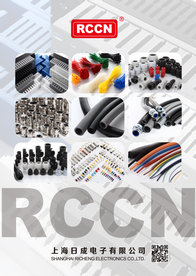ducts
Let’s still take 1.25 inch duct as a example, the requirement of the cable diameter not only has to be smaller than 1.25 inch, but it also has to be small enough so it can accommodate the bends and length of the conduit route.
Most fiber cable manufacturers produce cable duct fiber cables containing less than 432 fibers in order to meet the 1 inch diameter size requirement for 1.25 inch innerduct. So for a 4 inch conduit, the maximum fiber counts is 1296 fibers.
But compared to copper cables, fiber cables still have the advantage of higher fiber counts with smaller diameters. The common practice cable trunking in fiber optic cable installation then, is to place multiple 1.25 inch innerducts in the common 3.5 inch or 4 inch conduit structures, this practice basically doubles or triples the duct capacity.
For OSP (outside plant) fiber cable installations, the challenge is different than indoor applications. In this case, you have to choose the correct inside diameter of the innerduct.
The most common conduit is 100mm in diameter and 150mm diameter is becoming more popular. Conduit is laid in the ground, and innerducts are drawn through the cable way conduit. Fiber optic cables are then deployed and pulled through the innerducts.











